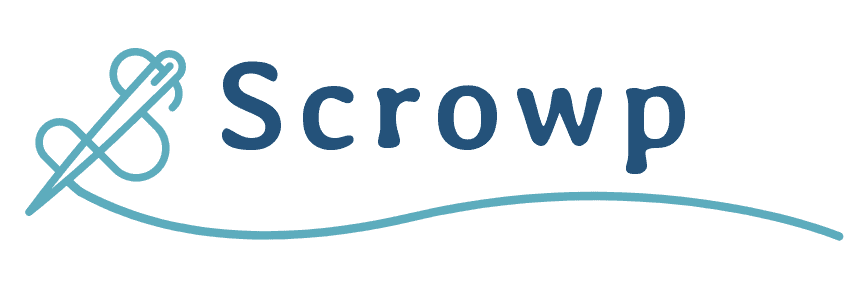
Internal linking, often overlooked, is a crucial element of a successful SEO strategy. By strategically linking internal pages within your website, you create a robust network that guides search engines and users through your content, improving overall site architecture and user experience.
Introduction
This article will delve into the intricacies of building effective internal links, exploring best practices, tools, and strategies to enhance your website’s search engine visibility and user engagement.
Understanding the Importance of Internal Linking
- Improved User Experience: Internal links provide a clear and intuitive navigation path for users, allowing them to easily explore related content and discover valuable information within your site. This enhances user satisfaction and encourages them to spend more time on your website.
- Enhanced Crawl-ability: Search engine bots rely on links to discover and index new pages on your website. Internal links create a clear path for these bots to crawl your entire site efficiently, ensuring that all your valuable content is indexed and discoverable.
- Keyword Distribution and Context: Internal links can help distribute link equity and keyword relevance across your website. By linking to relevant pages with specific anchor text, you can signal to search engines the importance and context of those pages.
- Improved PageRank: In simplified terms, PageRank is a metric used by Google to determine the importance of a webpage based on the number and quality of incoming links. Internal links can help distribute PageRank across your website, boosting the visibility of important pages.
Best Practices for Internal Linking
- Strategic Anchor Text:
- Use relevant and descriptive anchor text that accurately reflects the target page’s content.
- Avoid generic anchor text like “click here” or “learn more.”
- Incorporate long-tail keywords and variations to improve keyword targeting and context.
- Consider using branded anchor text to strengthen your brand’s authority.
- Contextual Relevance:
- Ensure that internal links are placed within relevant and natural contexts within your content.
- Avoid stuffing links into your text; prioritize readability and user experience.
- Link to pages that genuinely complement and expand upon the current page’s topic.
- Link Placement:
- Utilize a variety of link placement strategies, including:
- In-text links: Integrate links naturally within the flow of your text.
- Image links: Link to relevant pages using images.
- Navigation menus: Include internal links in your main navigation and footer.
- Related content sections: Create dedicated sections within articles to link to related posts.
- Resource pages: Compile comprehensive resource pages with links to relevant internal and external resources.
- Utilize a variety of link placement strategies, including:
- Link Depth:
- Aim for a balanced link depth across your website.
- Avoid creating overly deep link structures that can make it difficult for both users and search engines to navigate.
- Consider using a sitemap to visualize your link structure and identify potential issues.
- Link Equity Distribution:
- Strategically distribute link equity across your website by linking to important pages, such as your homepage, about us page, and product pages.
- Avoid over-linking to a single page, as this can dilute link equity and potentially harm your overall SEO performance.
- Regular Review and Updates:
- Regularly review your internal link structure to identify and address any broken links, outdated content, or ineffective link placements.
- Update your internal links as needed to reflect changes in your website’s structure and content.
Tools for Internal Linking Analysis
- Google Search Console: Analyze your website’s internal link structure using the “Internal Links” report in Google Search Console. This report provides insights into the number of internal links on your site, the most linked-to pages, and any potential issues with your internal link structure.
- Screaming Frog SEO Spider: This powerful tool allows you to crawl your website and analyze various aspects of your on-page SEO, including internal links. Screaming Frog can identify broken links, identify orphan pages (pages with no incoming links), and provide valuable data on your internal link structure.
- SEMrush: SEMrush offers a comprehensive suite of SEO tools, including an internal linking analysis tool. This tool helps you identify key pages within your website, analyze their link equity, and identify opportunities to improve your internal link structure.
- Ahrefs: Ahrefs provides in-depth data on your website’s backlink profile and internal link structure. You can use Ahrefs to analyze your website’s link equity flow, identify potential link juice bottlenecks, and discover opportunities to improve your internal linking strategy.
Advanced Internal Linking Strategies
- Information Architecture:
- Carefully plan and design your website’s information architecture to create a logical and intuitive flow for users and search engines.
- Group related content together and create clear navigation paths to improve user experience and facilitate internal linking.
- Content Pillars:
- Create in-depth content pillars around key topics within your industry.
- Develop a network of interconnected articles and resources around each pillar to provide comprehensive coverage and improve internal linking opportunities.
- Breadcrumb Navigation:
- Implement breadcrumb navigation to help users and search engines understand the hierarchical structure of your website.
- Breadcrumbs also provide valuable internal linking opportunities by linking to parent and ancestor pages.
- Pagination:
- If you have paginated content (e.g., blog posts, product catalogs), implement proper pagination with clear “next” and “previous” links to ensure that search engines can crawl and index all pages of your content.
- 404 Page Optimization:
- Create a custom 404 page that includes a search bar and links to your homepage, sitemap, and other relevant pages.
- This helps users and search engines navigate back to your website and minimizes the impact of broken links.
Building a Successful Internal Linking Strategy
- Conduct thorough keyword research: Identify relevant keywords and phrases for each page on your website.
- Analyze your existing content: Identify key pages and content pillars within your website.
- Plan your internal link structure: Create a roadmap for how you will link between different pages on your website.
- Implement your internal linking strategy:
- Carefully review and edit your content to incorporate relevant internal links.
- Regularly monitor and update your internal links to ensure they remain accurate and effective.
- Track and analyze your results:
- Monitor your website’s performance in search engines using tools like Google Search Console and Google Analytics.
- Analyze the impact of your internal linking efforts on your website’s organic traffic, user engagement, and overall SEO performance.
Conclusion
By implementing a well-defined internal linking strategy, you can significantly improve your website’s search engine visibility, user experience, and overall SEO performance. By strategically connecting your website’s pages, you create a robust network that guides users and search engines through your content, ensuring that all your valuable content is discovered and appreciated.





